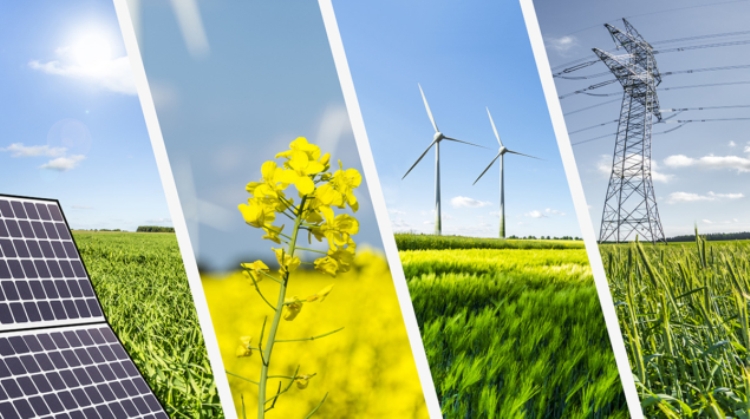India: a game-changer for international energy governance

Renewable energy supplies over 26% of global electricity. (Photo Courtesy: physicsworld.com)
One can assume the growth rate of any country, by observing its energy sector. And India has seen tremendous transformation over the years as far as energy is concerned. Around 20-25 years ago the rural India had no idea about life with electricity. But now data shows that 99.9% of households have electricity, thanks to the government policies and their successful implementation. Also in the rural areas millions people used to cook on ‘Chulha’ which indirectly was affecting the health of rural women. But due to ‘blue flame revolution’ the rural India got more than 80 million gas connections, which improved the cooking solutions and also the health of rural women.
Amitabh Kant, CEO of NITI Aayog did an analysis along with Fatih Birol is executive director of the IEA, for Hindustan Times in which he mentioned that, India has also seized the opportunity offered by energy efficiency. As part of the National Mission for Enhanced Energy Efficiency, the government has distributed about 370 million LED bulbs under UJALA scheme.
Through such initiatives, India has ensured that energy has become both widespread and affordable for its citizens, whose typical income is a small fraction of the global average. India has been a global pioneer in the large-scale deployment of wind and solar technologies, which account for nearly a quarter of its total power generation capacity.
The International Energy Agency (IEA) just published its first in-depth review of India’s energy policies, which includes high-level recommendations aimed at helping the government reach its goals, with a focus on energy system transformation and energy security.
Created 45 years ago to help ensure energy security for the world’s leading economies, the IEA is an intergovernmental organisation whose member and association countries account for 75% of global energy consumption. The IEA provides ambitious solutions to today’s energy challenges that have a positive, real-world impact on efforts to ensure a secure and sustainable energy future for all.
India joined the IEA family in March 2017, becoming an association country. Last month, the IEA received a mandate from its member governments to begin consultations with India on a strategic partnership as a pathway to eventual membership — a game-changer for international energy governance.
India is a rapidly growing force in global energy markets. The energy choices the country makes will be critical for the future of the planet, and the IEA is eager to support the government of India and share knowledge and expertise.
In recent years, the IEA has worked with the government of India to support a range of energy policy initiatives. This work includes policy analysis and advice on the integration of higher shares of renewables, and on an integrated approach to using energy efficiency and renewables to help meet goals on energy access, climate change and air quality.
Both of them concluded the analysis and gave some insights for the five key areas:
Renewables: India’s goals include increasing its power generation capacity from renewables from 80 gigawatts today to 175 gigawatts by 2022 — and eventually to 450 gigawatts in the long term. This will require a major increase in investment as well as the right approach to accommodating the growing shares of wind and solar, whose electricity output can vary depending on the weather, the time of day and the season.
Investments: India is also continuing to pursue a greater role for markets as it seeks to attract more investment for its expanding energy needs. The IEA welcomes the decisions to allow private-sector investment in coal mining, and to open up the country’s oil and gas retail markets. The Government of India will need to ensure full non-discriminatory access to the country’s energy transport networks, work with the states to implement power sector and tariff policy reforms, and take action to further reduce subsidies.
Oil security: Promoting renewables and domestic oil and natural gas production will help temper India’s growing reliance on imports of oil, gas and coal. But ensuring a secure oil supply will remain a pressing need, based on the expected growth in the country’s oil consumption and imports. The IEA commends India for having put in place a strategic petroleum reserve to cover more than 10 days of current net oil imports. However, those reserves may cover only four days of net imports by 2040 because of growing demand. In this context, the IEA supports India’s plan to expand its strategic oil stockholding and its efforts to develop international collaboration with countries that have experience in stockholding and emergency response to supply shocks.
Climate resilience: Making India’s energy system resilient to extreme climate conditions has to be a high political priority, as the country is witnessing intensifying water stress, storms, floods and other extreme weather events.
Innovation: If India’s admirable passion for innovation and technology is supported by a smart policy framework, it can unleash investments in clean energy technology. By adopting a country-wide research and development strategy, the government can bring together funding activities across India and engage with key players in the private and public sectors.
India has already proven it can overcome seemingly impossible challenges in developing its power sector. The IEA and the Government of India look forward to working closely together to continue improving the lives of India’s 1.3 billion citizens by increasing their access to clean, secure and affordable energy.